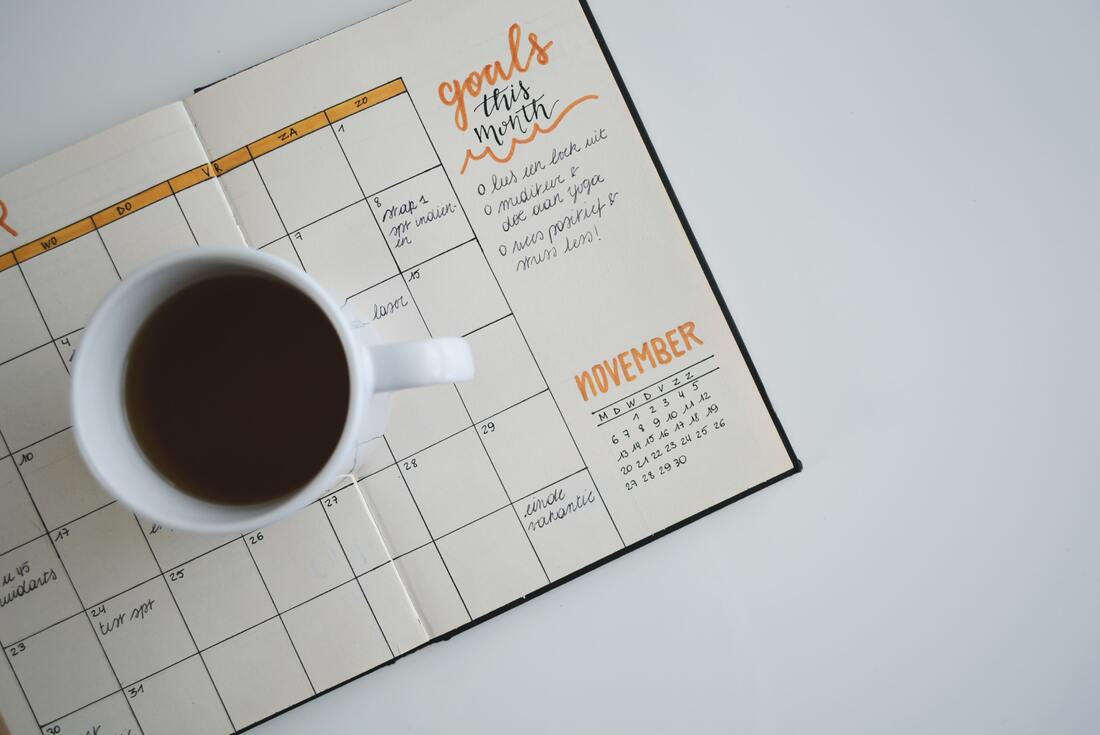|
10/29/2020 1 Comment Just the necessitiesI'm guessing you've packed for a weekend trip at some point in your life, and as you've done so, you've told yourself that you were packing light - only bringing what you really need. Then 30 minutes later you zip up the bag, lift it, and think - what the heck did I just pack? This may have been a similar situation when shifting from in-person to remote teaching at the start of the pandemic. You may even be facing this same situation again as schools continue to open and close due to illness rates. You may or may not have had the opportunity to grab a few essentials from your classroom to use to teach from home, at which point you may have felt like you were left in a resource lurch. With this uncertainty, it may be a good idea to have your teaching tools pared down to real essentials, or have those few things set aside at home. The key is to choose items that allow for meaningful learning and engagement, not items that will clutter your workspaces, wherever that is. I'm going to be blunt here and advise to ditch as many tangibles as you can. This is really hard for me to say and advocate for because I do love books and cool artifacts, but the more you can do digitally, the lighter your load will be. With that said, here are some digital and tangible options, keeping light load for both 1. Digital teaching tools: Let's focus on the use of your phone, or even better - a tablet if you have access to one. This may be all you need to engage students in a whole lot of ways. Just plug your device into your computer and share the screen with your students. Here are some things you can do.
2. Tangible teaching tools: If you need a tangible tools box, limit yourself to keep only a small tote box (think - sweater box) of items. Include items such as a few "bang for your buck" books that cover multiple concepts and techniques, a few grade or content specific artifacts, and a small whiteboard and marker. Example: A book like Brown Girl Dreaming by Jacqueline Woodson is a solid choice because of the depth and meaning it offers. Concepts include: growing up and coming of age, place, self-discovery, segregation, civil rights, family. Writing techniques: poetic language, imagery, narrative poetry The list of tools could be endless, yet choosing a few simple, no-fuss tools will save your sanity and your space. Try out new apps and replace artifacts in your tangible toolbox over time by setting up a schedule to do so. Read the full ASCD Inservice post here.
Subscribe to this blog and be entered to win this month's book draw. Learn more about services offered. Sign up for a FREE teacher coaching consultation call. App endorsements are unpaid. Free photo by Annie Spratt found on Unsplash.
1 Comment
10/18/2020 0 Comments Keeping Communication Simple
It sounds straightforward, keeping communication simple, doesn't it? Unfortunately, we know that communication is often the complete opposite of straightforward!
In last week's post we walked through a process for keeping our own to-do's simplified and prioritized (opt-in here for free toolkit here). Surely we can do the same with our communication systems, right? In reality though, we know how quickly communication can get muddled. Clear communication with colleagues, parents, students, and our admin teams is crucial for all things to run smoothly and with efficiency. Take a breath and let's break this down. 1. When communicating with colleagues, choose one or two platforms to serve a multitude of needs. You might choose to use WhatsApp messaging for quick messages such as schedule changes, new planning meeting location, etc. These quick messages can get missed, skipped, or lost if you are maneuvering between multiple apps or if they end up in a long email chain. For lengthier messages and attachments, you may choose your school email platform. Do not use personal email. 2. Centralize and streamline communication with parents. Whichever the platform for communicating with them, ensure that they understand the purpose of it. For example, parent newsletters should be sent out through the same system for all classes, such as through the school's management system or a parent email from the teacher. When the system is straightforward, parents know where to find information. 3. Keep your messages to any recipient short and concise. One item per WhatsApp or text, three items in an email to limit information or question overload. 4. Organize your longer messages with a simple structure like a numbering system or Q & A structure, depending on your message purpose. If you have a question to ask, ensure your questions are clearly numbered, or only ask one question per email to ensure your question not skipped. Also, request a reply by date to ensure your desired feedback is received in a timely fashion. Keeping communication streamlined, clear, and concise will reduce frustrations for you and the recipients of your messages. One less frustration to deal with!
Read the full ASCD Inservice post here.
Subscribe to this blog and be entered to win this month's book draw. Learn more about services offered. Sign up for a FREE teacher coaching consultation call. Free photo by Kelly Sikkema found on Unsplash. Want to take control of your to-do list? Get it below. 10/15/2020 0 Comments Taking controL of your to-do'sHow long is your to-do list? Do you feel like it's controlling you? While there are many things that we cannot control, there are also many we can - the piles on our desks, the amount of sugar we intake, and our to-do lists. The to-do list is one of those things that can easily take over our lives, because it doesn't seem to get shorter, and when we do get to cross things off, we end of adding more. That never-ending list can feel like an endless loop of terrible songs on the radio. So, how can we change the way we use a to-do list so it doesn't feel like it's rolling out of control? Let's walk through a short process. 1. Organize your to-do list in chunks, segments, or categories. This may help you alleviate the burden of a long grocery-style list.
2. Determine which segment or chunk is your priority for the day. This may need to be determined by deadlines or by what your daily maintenance tasks tend to be. 3. Give yourself a realistic timeframe when working on your list to help stay focused. Too much time allows for veering, and not enough time can cause additional stress. 4. Give yourself some leeway to do the top 3-5 tasks, depending on what they are and the time required to do them. Again, be realistic with your expectations, but push yourself to complete the prioritized list in your allotted time. 5. Make a process like this a daily routine. You will become more efficient setting up your day, and building the routine will help you stay in control of your to-do's. We let too many things run our lives. Be the person that takes control of their to-do's so they do not control you anymore. Want a FREE download to help you get control out of your to-do list? Sign up below!
Read the full ASCD Inservice post here.
Subscribe to this blog and be entered to win this month's book draw. Learn more about services offered. Sign up for a FREE teacher coaching consultation call. Free photos found on Unsplash. 10/7/2020 0 Comments Limit your intakeIf you read last week's post, you will have had some time to think about the clarity of your goals in meetings, lessons, etc. So let's think about what can impede our goals from becoming fulfilled... our close friend, the media. We are distracted from our center point when we are always watching what's wrong with the world and focussing our attention on things we cannot control. What you CAN control is your media and social media intake. What's worse than continually being exposed to an assortment of media stories that emanate negativity followed by negative comments, and exude people's negative energy? Not much! And guess what? We do this by choice! We are amid a whole smorgasbord of negative, with a tiny side dish of joy. Let's shift this! How can we make that a more joyous smorgasbord rather than one that is full of week-old crab legs and stinky, rotting fruit. In on our original post (link below), my co-author and I shared the importance of choosing a couple of trusted media sources to get your news, and then turn off the rest. Here are some further tips to help you navigate towards positivity: 1. Find one trusted, fact-based news source. Watch or listen for no longer than an hour per day. 2. Limit your time on scrolling Facebook or Instagram, or whatever your pleasure time social media outlet is. These platforms are fun, but it is more than easy to be absorbed into a comparative culture of envy and unnecessary online shopping. So before you open the app, consider your purpose in being there, and limit your time to 30 minutes. 3. Consider what you share from your social media. Think through the messages and vibes you send out to your connections will also affect the feedback you receive in your comments section. Since you have been conscious about what you are intaking, be mindful of what you are outputting. Social media is a reciprocal experience. We feed into it as much as it gets sent out to us, and then some. Free yourself of the control your phone has over your time, and consider using that extra time to watch docu-series, take a walk, or visit an outdoor space to clear some mental space for more important things in your life. Read the full ASCD Inservice post here.
Subscribe to this blog and be entered to win this month's book draw. Learn more about services offered. Sign up for a FREE teacher coaching consultation call. Free photos found on Unsplash. 10/1/2020 0 Comments It's October & we are still "here""Here" as in pandemic and "here" as in the weeds of teaching in the most transformative time in education that any of us have known in our lifetimes. Back in April, a good friend, former colleague, and often co-writer and I wrote a short guest blog post for ASCD Inservice called Create a minimalist mindset in moments of crisis. We wrote this as wee offering of the mindset that each of us hold - that good teaching can occur even when you are left in a lurch with what feels like nothing. Well, it's October, and we seem to still be in this non-stop crisis loop. In our post, we give 5 key ideas to key our minds and spaces tuned in for during crises, because the reaction is to flounder, and it seems like we are still floundering. Let's focus on one of those points: clarify your goal(s). How can you even identify your goal when there's a million things in the ether clouding your vision? Here's how: 1. Think about what your task is, whether it's teaching your class during block 4 (in your classroom or online), or attending a Zoom meeting with your admin or team 2. Now ask yourself: what is my goal here? What's the first thing that comes to mind? Is the goal of teaching your class to focus on getting to know them? Is the goal of your meeting with your team to look at the week's upcoming math lessons? Your answer should come to you pretty quickly and naturally. 3. If you identified your goal easily, awesome. But, what do you had to think too hard to identify your goal? Perhaps rethink the task, meeting, or lesson. You have many people to accommodate and your time is precious, so you want to ensure all the time you spend with your students and colleagues is well-used. Plan lessons that require thoughtful planning but little preparation, lessons that have multiple levels of meaning and impact, and send emails when possible instead of holding meetings. Planning your time with intention is a way to help you reduce the perpetual feeling of band-aiding the next trip-and-fall. Proactive planning as much as possible - as we have learned from earlier this year - rather than reactively could save a lot of us from burning out. Read the full ASCD Inservice post here.
Subscribe to this blog and be entered to win this month's book draw. Learn more about services offered. Sign up for a FREE teacher coaching consultation call. Free photos found on Unsplash. |
Archives
November 2023
|
Photos from wuestenigel, wuestenigel, wuestenigel, markus119, cowbite, mikecogh, shixart1985, symphony of love, kennethkonica, homegets.com, wuestenigel, quinn.anya, Chuckcars, Dave Hamster, mikecogh, wuestenigel, debaird™, wuestenigel, shixart1985, trekkyandy, frankieleon, Sue90ca MORE OFF THAN ON, WarmSleepy, symphony of love, Marcus Hansson, Cliff Johnson, Leonard J Matthews, Archives Branch, USMC History Division, tmray02, Rawpixel Ltd, joostmarkerink, Andrew Gustar, Thomas James Caldwell, Dano



